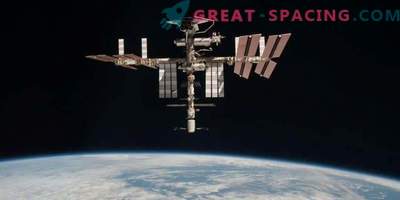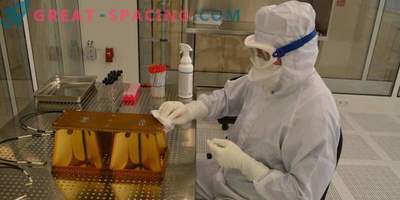
A scientific balloon is filled with helium in the New Mexico desert to be sent to the stratosphere (October 10, 2015).
The company in preparation for the launch of the human mission on the Red Planet has developed in full swing. But it is very important to prevent infection by terrestrial microbes. Therefore, spend a lot of tests to find out their level of stability. It will also help avoid false positive signals from organisms that we could bring with us. Now at NASA they are doing everything to understand whether life on the Red Planet was once upon a time.
In October 2015, they decided to conduct an experiment at an altitude of 31 km above the earth's surface. For this, a large balloon with experimental samples was used. The results should have shown how microbes will behave on space equipment designed for Martian missions. The simulated situation demonstrated that most bacteria died due to ultraviolet radiation.
The experiment was led by David J. Smith from the Ames Research Center in Silicon Valley. To this end, a very robust microbe was placed in a protected endospore. Placing in the brutal conditions of the stratosphere helps to recreate the Martian surface. The fact is that both places create the same level of stress: cold and dryness, low pressure and a strong dose of radiation. When the samples were analyzed, it turned out that after 8 hours of attack 99, 999% of the bacteria died. Scientists examined the genes of survivors of ultraviolet rays, and found differences in DNA compared with the population of the same bacteria stored in laboratories. It turns out that if some microbes survived the journey to Mars, then they can genetically change. However, it is important to understand whether these mutations can affect the ability of bacteria to survive.

The E-MIST Experimental Vehicle, floating 31 km above the surface aboard a NASA science balloon. Each white dot accommodates the bacteria Bacillus pumilus SAFR-032. This is a very hardy microbe, extracted from the assembly shop of the spacecraft.
“Another problem is that we only tested one strain on this flight,” says Smith. “In the future, we will need to check more advanced species to find out if everything is also dying quickly. We'll also have to check out those hiding under dead endospores and dusty layers. We do not know what to expect. ”











































